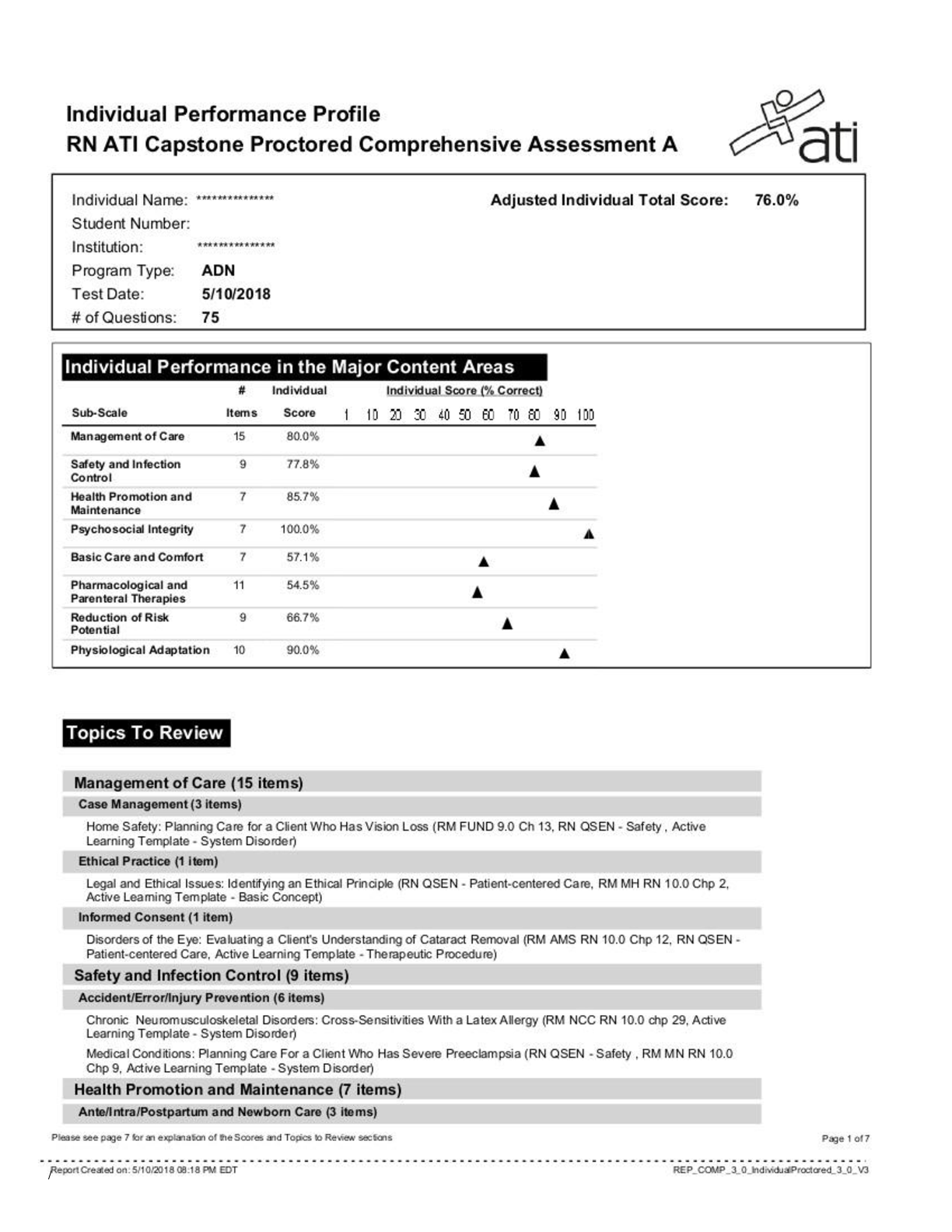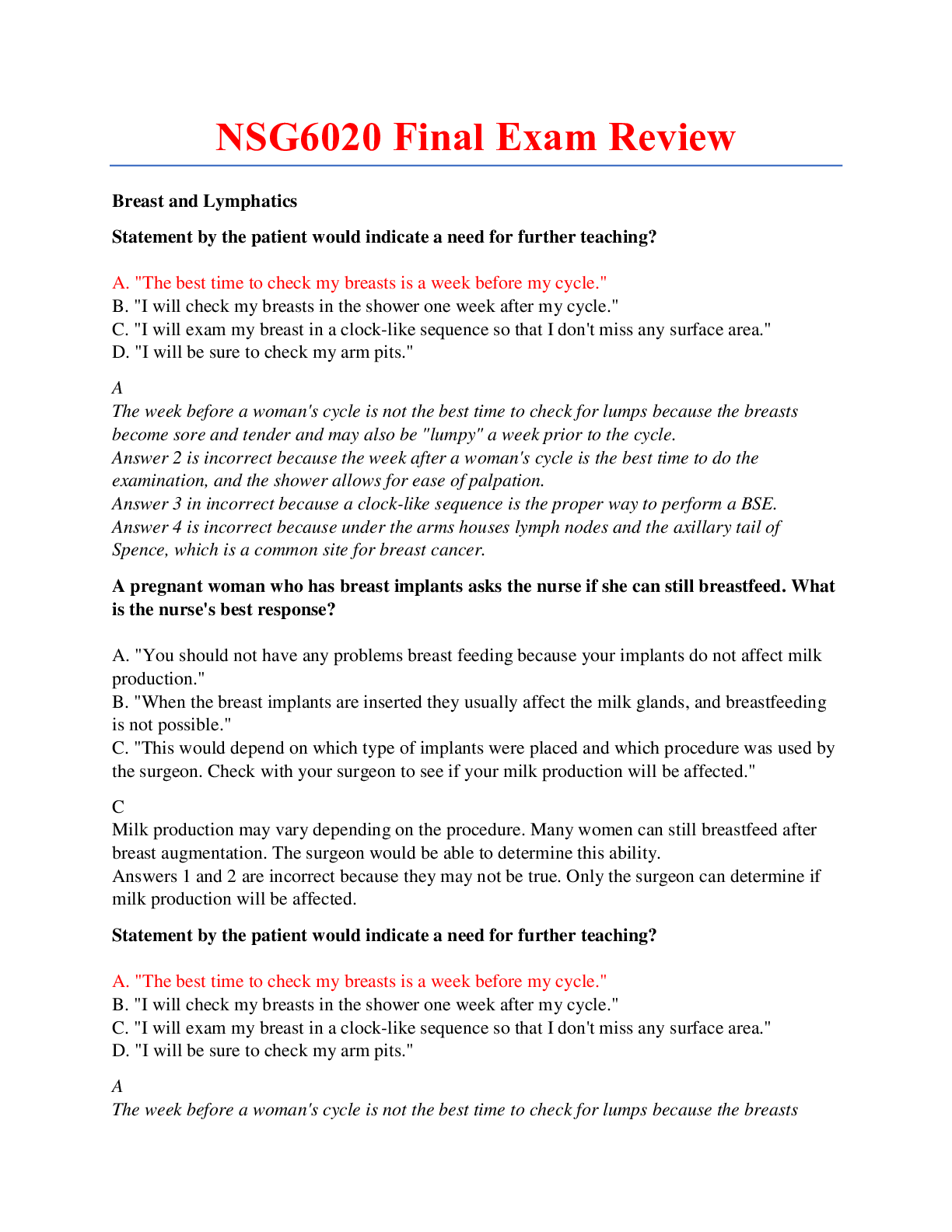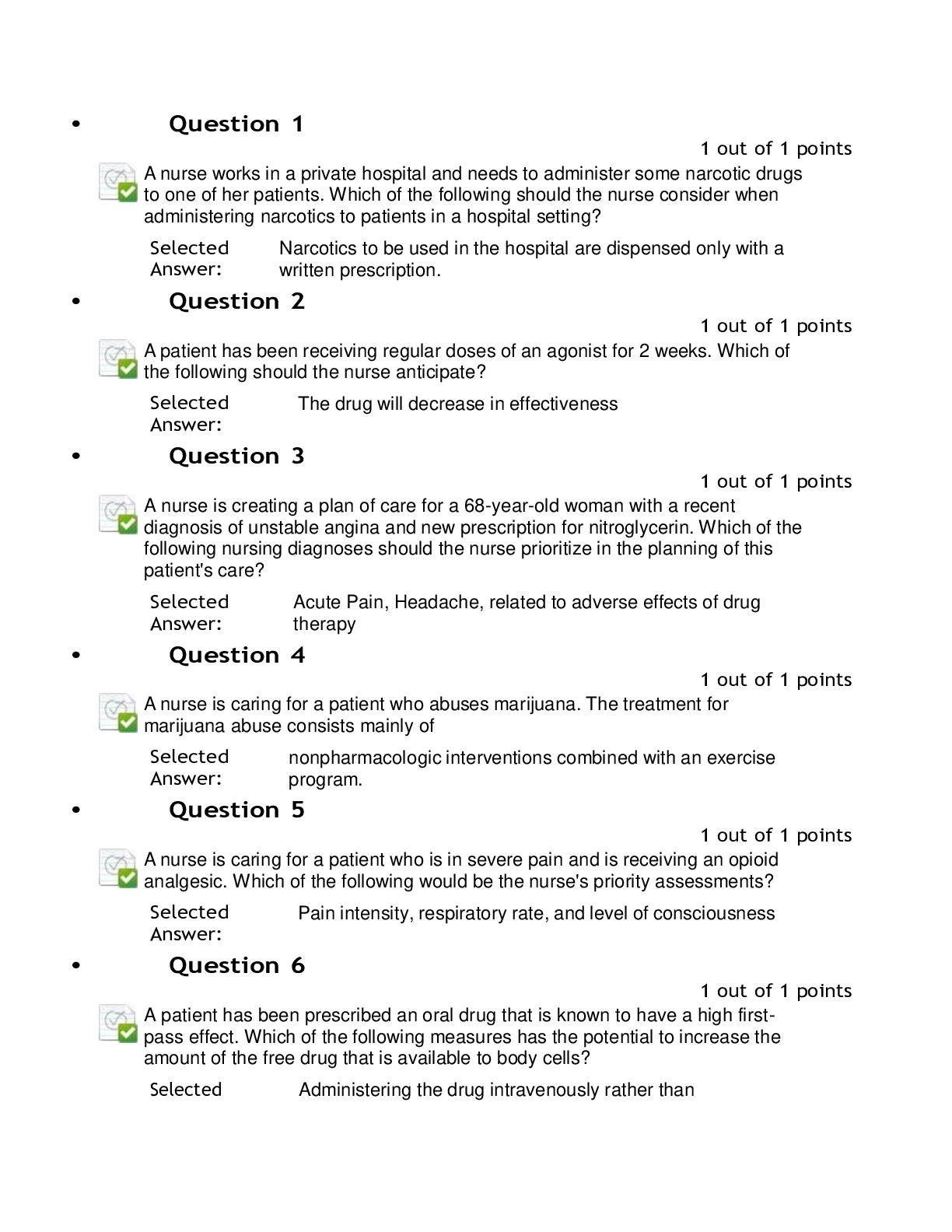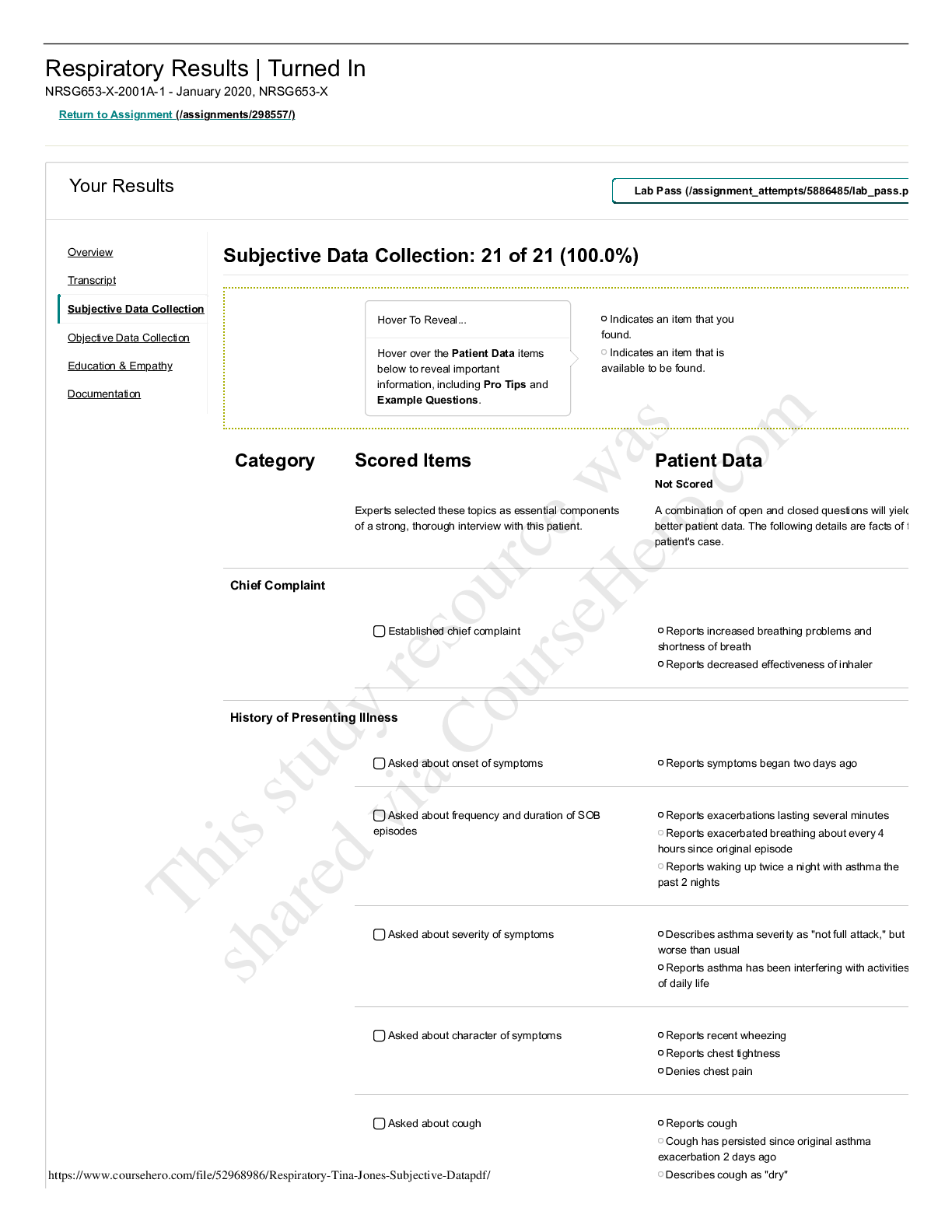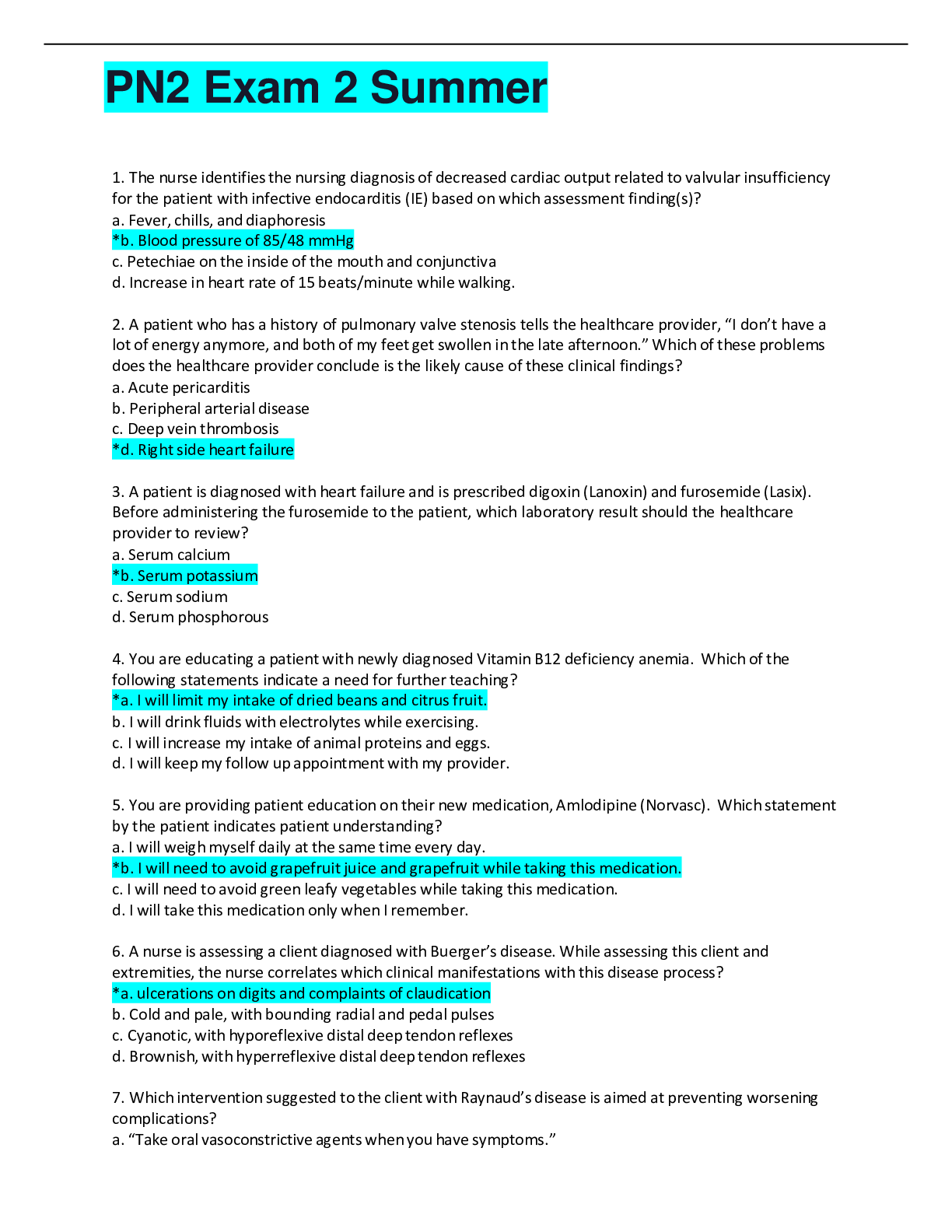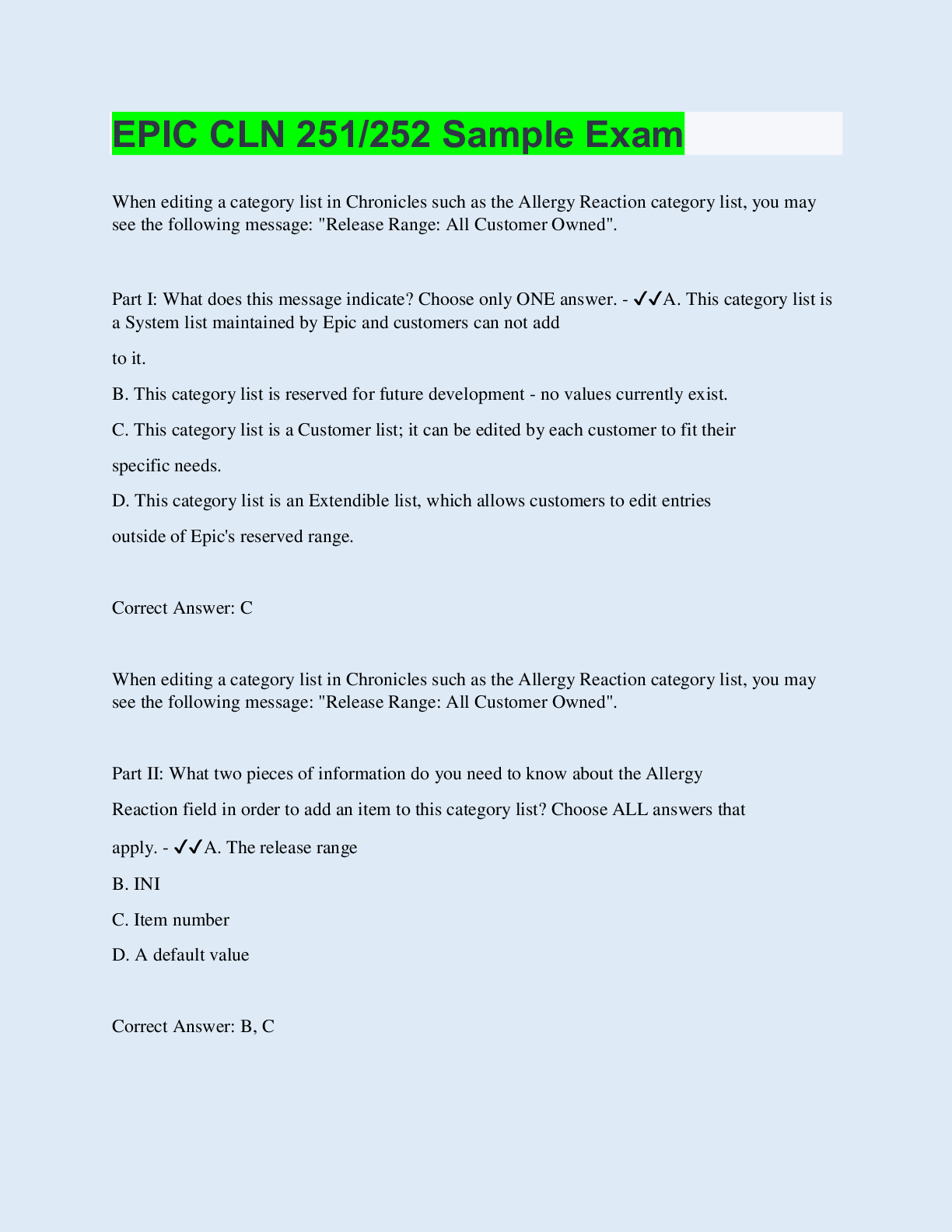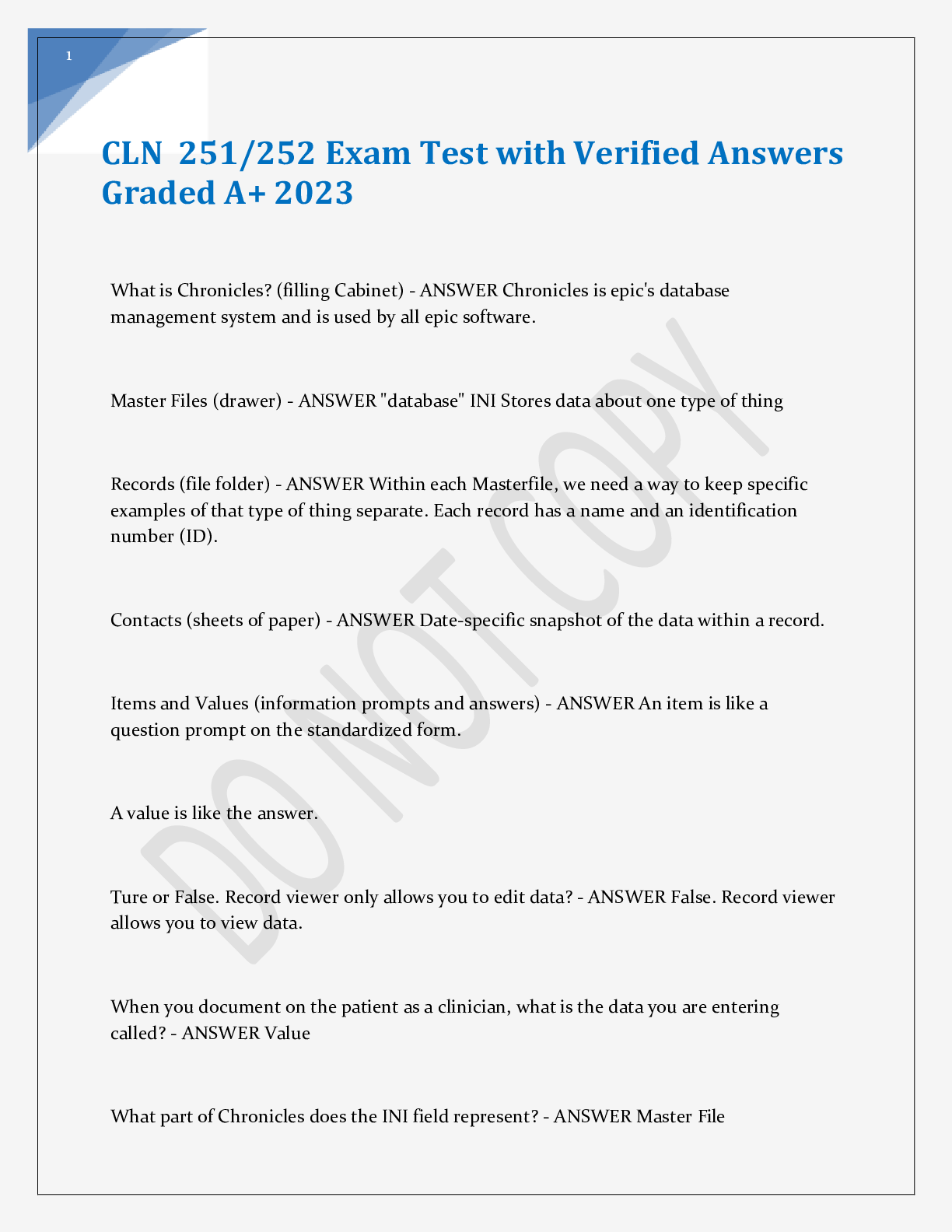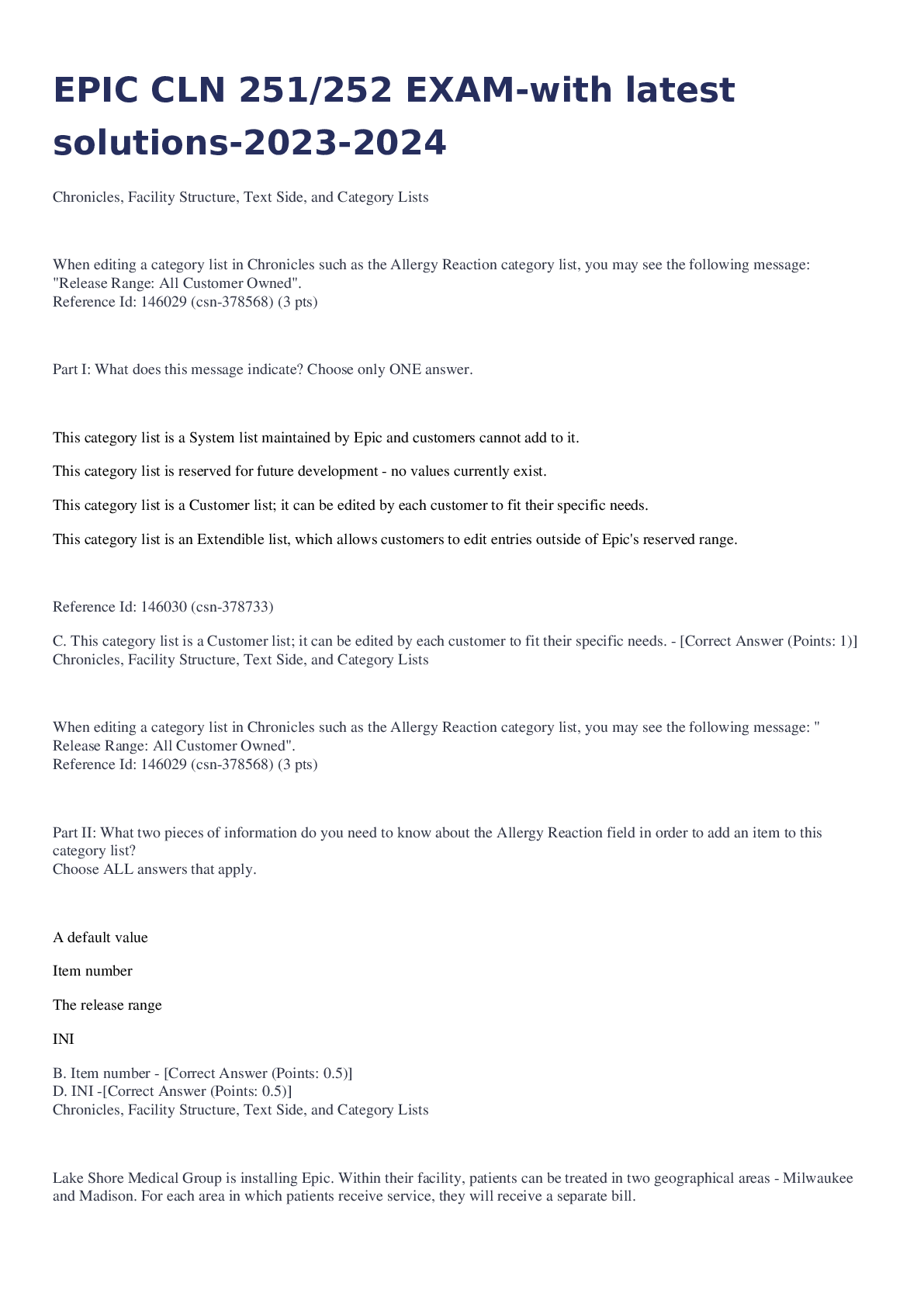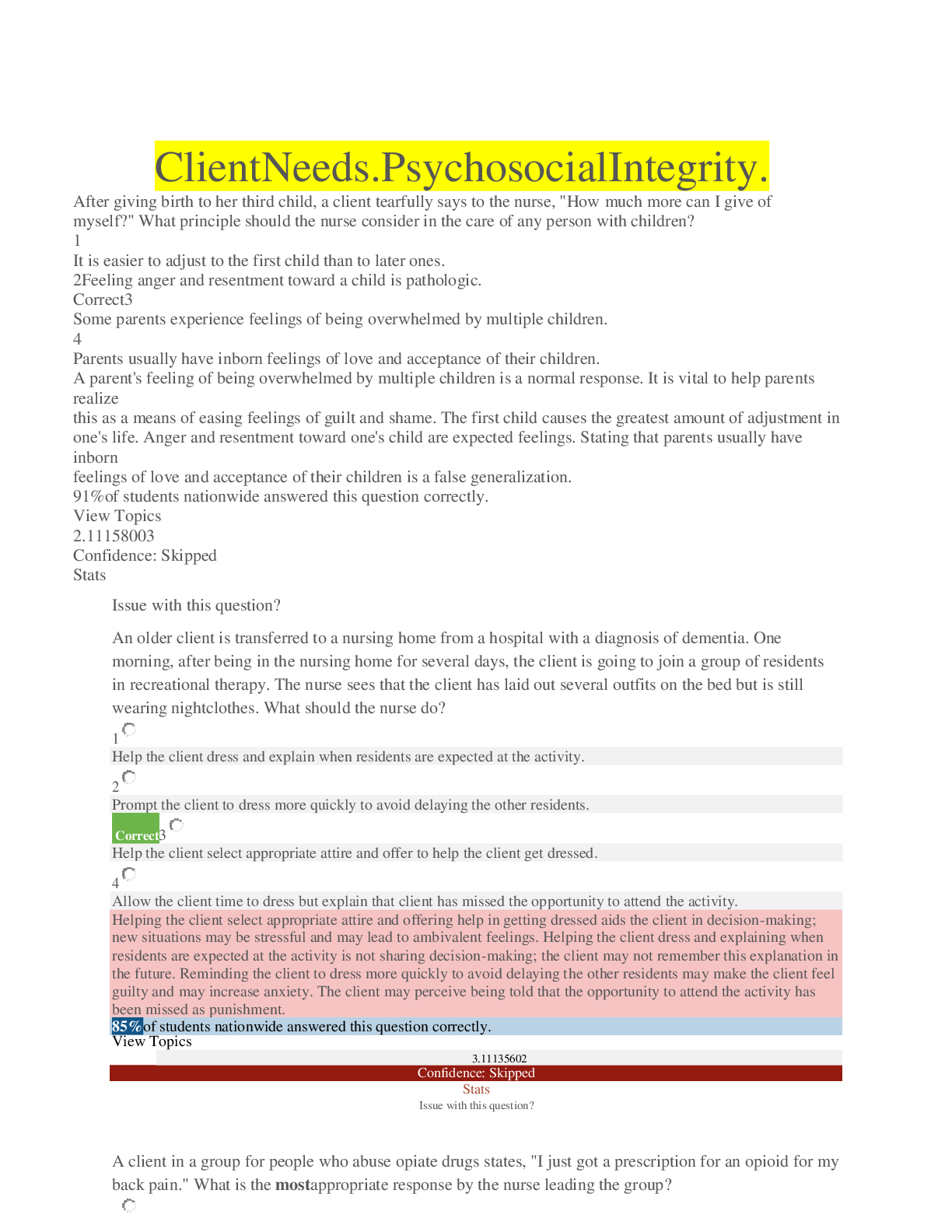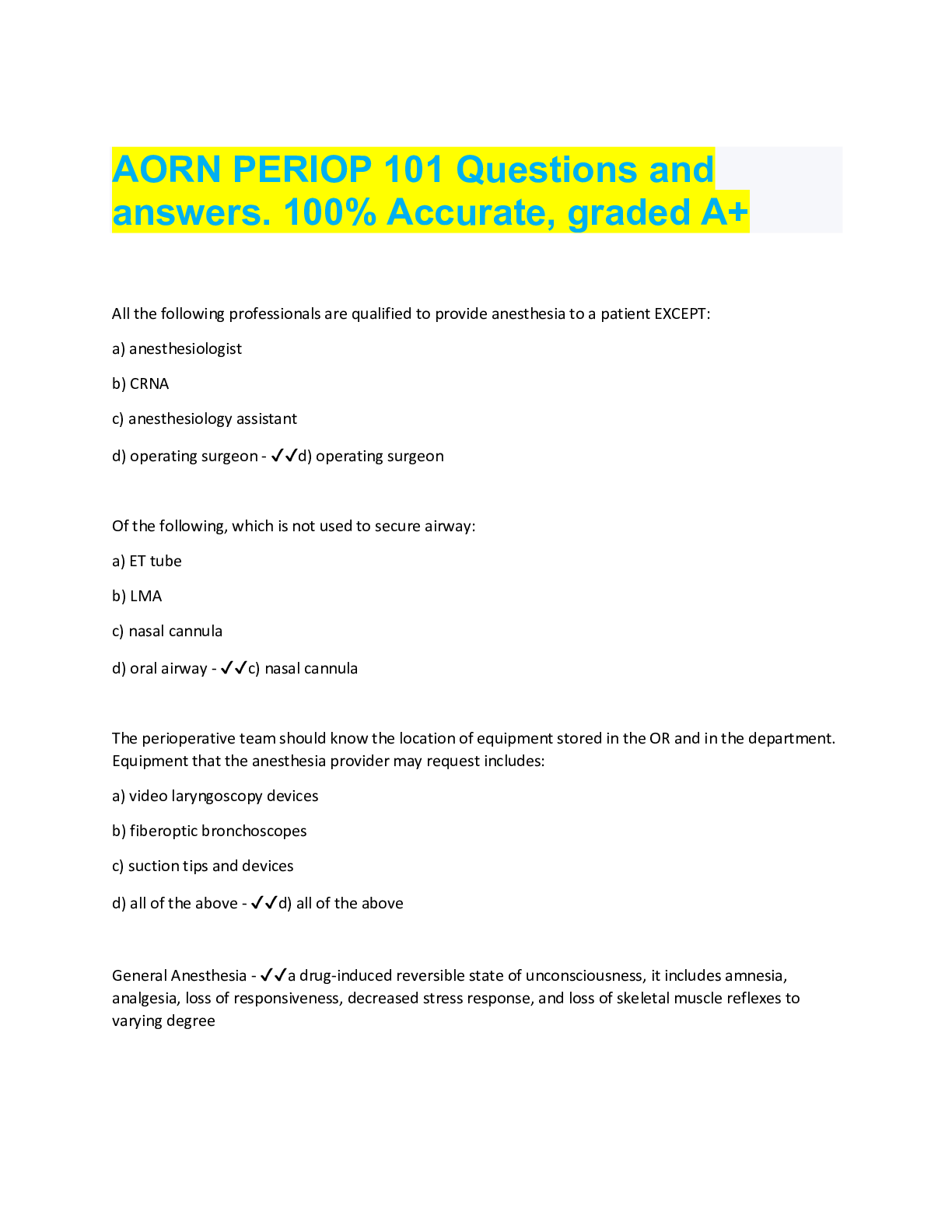NUTRITION 101
Document Content and Description Below
NUTRITION 101 1. What is the major monosaccharide found in the human body? . glucose 2. Which of these is a complex carbohydrate that cannot be broken down by the human digestive process? d. fib... er 3. What is the purpose of the Dietary Guidelines for Americans, 2010? d. to help Americans choose an overall healthful diet 4. How much moderate-intensity exercise is recommended in order to decrease an individual’s risk of chronic disease? a. 30 minutes per day 5. What is an advantage of fat as a source of fuel for exercise? d. It supplies more than twice the energy of carbohydrates 6. In the human body, when is glycogen synthesis greatest? d. immediately following exercise 7. What is the first step in the production of energy from food? a. anaerobic breakdown of glucose in the cytoplasm 8. A cell’s genetic material is contained in its b. nucleus. 9. The primary functions of epithelial tissue in the lining of the respiratory tract are to d. secrete important substances, absorb nutrients, and excrete waste. 10. What happens in the human body when too much Vitamin C is consumed via supplements? d. It is excreted in the feces and urine. 11. What substances manufactured by the endocrine glands act as chemical messengers in the body? c. hormones 12. What is the term for the partially digested food mixture as it leaves the stomach and enters the small intestine? a. chyme 13. How does the body regulate blood glucose levels after a meal? c. Insulin is released from the pancreas. 14. Which of these is the only animal-derived food that contains a significant amount of carbohydrates c. milk 15. Which enzyme breaks down carbohydrate? c. amylase 16. What product is formed as a result of the incomplete breakdown of fat when carbohydrates are not available to the body? b. ketones 17. Which type of fats can raise the low-density lipoprotein (LDL) level in the blood? a. saturated 18. Which of the following is a risk factor for cardiovascular disease? d. blood pressure >139/89 mg HG 19. If a 100-calorie serving of food has 10 grams of fat, what percentage of the calories in that food is fat? a. 90% 20. Plant proteins are considered incomplete when they are missing which of these? d. essential amino acids 21. Edema can be caused by a lack of which substance in the bloodstream? a. cholesterol 22. The enzymatic digestion of protein begins in the c. stomach 23. Based on the RDA, how many grams of protein would a healthy 125-pound woman need daily? a. 46 24. Which of the following is closely correlated with an increase in basal metabolic rate? c. having greater lean body mass 25. Joe is 25 years old and weighs 154 pounds. What would be Joe’s 24-hour estimated basal metabolic rate? b. 1680 kcal/24 hrs 26. Which term refers to the minimum amount of energy required to maintain the body at rest? a. basal metabolism 27. What theory proposes that everyone has a genetically determined body weight that is maintained through internal controls? d. set point theory 28. In which list are all of the vitamins fat-soluble? b. Vitamins A, D, E, K 29. What is the primary role of Vitamin D in the body? b. to help regulate calcium and bone metabolism 30. Where is most Vitamin A stored in the body? Liver 31. Which vitamin is synthesized in the skin with exposure to UVB rays? d. Vitamin D 32. Iron absorption is enhanced by the consumption of d. oranges. 33. Why does an increase in energy expenditure require an increase in B complex vitamins? b. They are involved in carbohydrate, fat, and protein metabolism. 34. What compound is necessary for the absorption of Vitamin B-12? a. intrinsic factor 35. How does sodium maintain appropriate fluid balance in the body? a. In osmosis, sodium acts as the major positive ion in the extracellular fluid. 36. Which mineral is important in regulating the human heartbeat? b. potassium 37. Goiter is caused by a deficiency of b. iodine 38. While Jim was running a marathon he lost 2.5 pounds. How much fluid should Jim have consumed to prevent dehydration? d. 50-60 ounces 39. Why does excessive intake of alcohol result in dehydration? b. Antidiuretic hormone is inhibited by alcohol. 40. A decrease in urine output would likely be the result of a diet that is b. high in protein and sodium. 41. Which pituitary hormone signals the kidneys to conserve water by conserving sodium? a. aldosterone 42. During which stage of the lifecycle can a prolonged deficiency in iron result in impaired cognitive development? a. early infancy 43. Which government program provides supplemental food vouchers specifically for low-income pregnant women and children? d. Women, Infants, and Children (WIC) 44. Which is a symptom of anorexia? d. rituals involving food and exercise 45. Which statement describes a consequence of anorexia? b. Body temperature is lowered, which results in decreased metabolism. 46. Which of these is an effective means to reduce the risk of foodborne illnesses? d. Thaw foods in the refrigerator. 47. According to the Environmental Protection Agency, which of the following is a useful strategy for reducing the intake of pesticide residue from foods? a. Thoroughly scrub, rinse, and peel fruits and vegetables. 48. It is unlawful to add any amount of a cancer-causing substance to food, according to the Delaney Clause. 49. Which of the following is an unintended effect of the use of pesticides in food production? c. destruction of natural predators of plant eating insects 50. Which food should be consumed no more than once per week to limit the intake of mercury? d. swordfish 51. Which of these actions helps to decrease the risk of pesticide exposure? a. Remove skin from poultry and fish. 52. Which of these pregnancy complications can be reduced by 50% if a woman is physically active during pregnancy? c. gestational diabetes 53. The body's need for iron increases during pregnancy because of the need to d. synthesize additional hemoglobin 54. It is recommended that a healthy woman of normal weight gain about how many pounds during pregnancy? c. 26 to 35 55. After about six months, which mineral stores have been depleted in breast-fed babies? b. iron 56. Why is it recommended that solids foods be introduced after six months of age? b. to decrease risk of food allergies 57. Which of the following can increase the risk of osteoporosis? c. inadequate exposure to sunlight 58. What is one of the basic premises of the USDA/HHS Dietary Guidelines for Americans,2010? c. Nutrient needs should be met primarily through food consumption. 59. How does an active lifestyle help to slow some of the physiological changes that occur during aging? a. maintains muscle mass 60. Charlie is 75 years old and is complaining of problems with constipation. Which dietary recommendation may be appropriate to help Charlie establish more regular bowel habits? c. Increase intake of whole grains and water [Show More]
Last updated: 1 year ago
Preview 1 out of 3 pages

Reviews( 0 )
Document information
Connected school, study & course
About the document
Uploaded On
Aug 09, 2019
Number of pages
3
Written in
Additional information
This document has been written for:
Uploaded
Aug 09, 2019
Downloads
0
Views
117


